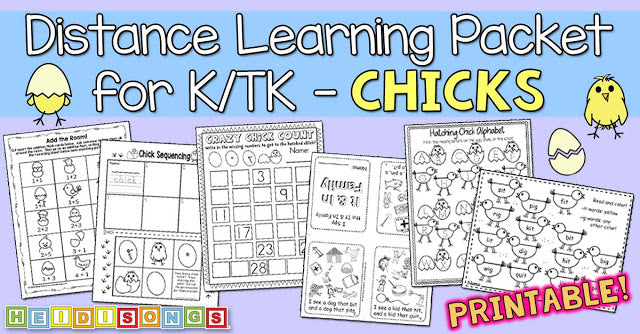


In this blog post, I am going to give you a general framework for how I make lesson plans for my small groups and learning centers each week. As you will see, I focus on a specific curricular area or skill as a routine each day of the week. By sticking to a routine such as this, and by following my Pacing Guide (free), I can be sure that I will cover all of the skills that I am supposed to cover during the school year. And, that makes it pretty easy to do lesson plans each week!

I always put the children into four different groups that rotate around the room every 15-20 minutes. The four groups are Language Arts, Math, Art, and Independent Mini-Centers. When the children get to the independent table, I often have the group split up and then go to “mini-centers.”
Planning for the Language Arts Table
These are the types of activities I do each day of the week. Below you will find a rough outline of how I organize my plans. You can find more information on how I run my centers here.
For the language arts table:
– Mondays: Guided reading groups: (I have them ability grouped on Mondays for sure, and then only ability group them on the other days if I need to.

– Tuesdays: Phonemic Awareness, Phonics, and Sight Word Practice: My district uses the SIPPS program for this, and we are required to follow it. It is our core instructional program for Kindergarten language arts, but is an intervention for the other grades. Basically, it is a scripted program that has you practice each of the elements listed above in a systematic way. (I prefer to be creative with my lesson plans, but those days are gone!)

– Wednesdays: Guided Writing: There is a great blog entry on writing with Kindergartners that I would recommend you read if you are interested in knowing more about how I teach writing. I described the whole thing there in detail.
To find out more about our Sight Word Sticker Book project, click here.

– Thursdays: Practice Sounding Out CVC Words or More Sight Word Practice, or an Extra day of Writing as Needed: Depending on what is needed most, we do some type of CVC activity, such as playing CVC Bingo, or play a game with CVC words, etc. Or we might do a CVC worksheet that has the same sight words included on it as are in our reader for the week. I have the children take turns reading the sentences on the worksheets to me as they work, so that they get an extra dose of reading practice in! OR, for sight word practice, I give them a little xeroxed reading book out of paper that has a sight word in it that they need to work on. (Check my Pinterest Emergent Readers Board here for links to lots of free or low cost printable books!) I have the children search for certain sight words that we are working on in the books, and color them a designated color. Emergent readers tend to be a bit repetitive, so it is easy to get the kids to look for several of the same sight words over and over again and color them as they find them. And while they are looking and coloring, I will ask each child to stop what they are doing and read me the book individually. I LOVE this activity!





– Fridays: Most years, my class goes to the library on Friday mornings, and then returns to the classroom to do something with our book buddies! But if we do not have book buddies for some reason, we review whatever is needed on Fridays after library. If the children don’t need to review anything in particular, sometimes we play a phonemic awareness game or activity. I can always find something on my Pacing Guide that they need to work on! If I have some testing to do, I might give them rhyming word puzzles or a color word worksheet to do while I do some individual testing. In any case, I like to mix things up and do “something different” on Friday mornings, such as a whole group project, a book making project that takes a bit longer than usual, or some other kind of project that wouldn’t fit well in a group rotation.

Planning for the Math Table
At our math table, I usually have my aide play games with them regarding our math unit that we are working on. Of course, it totally depends on the time of year and what is on my Pacing Guide. I have card games like “Bang” and Bingo for number recognition; I have some problem solving boxes with manipulatives in them; I have games for comparing sets, etc. A lot of these games are on my Musical Math Resource CD that you could get if you wanted to have a bunch of games to print out.
– We often spend one day a week just working on writing numbers and general number formation, especially during the first trimester. We can back off on this later in the year once they have mastered writing their numbers from memory.

– We spend another day each week putting numbers in order, especially during the first trimester. Of course, some kids need to keep working on this all year long, so that is what we do! I keep a list of what number the kids have mastered putting them in order up to, and I have each kid work on a bag of numbers that is right for them- either 0-10, 0-20, or 0-30.

– We spend the other three days per week just working on other types of skills, like addition or telling time, etc. It depends on what my Pacing Guide indicates we should do.



Planning for the Art Table
And then there is the art table! I always have an art project prepared. Most of the time, they are working on making a page in a book that they will get to take home and read when they are all finished. I almost always have them working on a “Singable Book” that we read/sing together daily. These books tend to revolve around our science or social studies theme, but I do have one rhyming words book that they do, and a couple of math books that they also make. We do more activities for science and social studies later in the day.
These books, the songs that go with them, and the masters for the books are all on my website. The CD is called “Little Songs for Language Arts,” since it will have some phonemic awareness songs on it also, in addition to the singable books. The resource CD with the masters and directions for the books is called, “Printable Projects.” Each of these little books can also be downloaded individually. Below is the project for the “Our School Farm” book.
Planning for the Independent Mini-Centers Table
I have managed this station in different ways over the years, depending on the needs of my class. Sometimes, I just keep them together and give them one activity to all do independently at the table together. That works fine as long as I have enough supplies for all of the children. In other cases, it works better to split them up. So, when the children get to this station, they immediately split up and find the activity with their names on them. (The children are paired up based on who can work best together, and their names are printed on a sign. After school each day, I rotate the SIGNS- not the supplies. So the kids are trained to look for their names on the signs.)
– Mini-Center 1: Sight Word Word Work (Look at my Pinterest Sight Word Ideas board for TONS of great ideas!)
– Mini-Center 2: CVC or Phonics Word Work (Check out my Pinterest Phonics Ideas board or my Pinterest Learning Centers Board for even MORE great ideas!)
– Mini-Center 3: Listening Center- (You could even let the children watch ebooks online if you have an iPad or a computer with internet access! My Pinterest E Books Online Board is a great resource for finding these!

– Mini-Center 4: Read to Yourself or With a Friend (or even some time on a computer or iPad?)

Each week when you plan, just choose a new activity for each of the four mini-centers. Four mini-centers is MUCH easier to plan and prep for than mini-centers for the entire class! Mainly, you will just need different ways for the children to build sight words and CVC words. You could also have journal writing be one of the centers. Just stock it with plenty of colored markers and interesting things to write and draw with.
Planning for Physical Education
For physical education, we usually use volunteers. Last year I had a dad that came and took the kids out for motor development as a part of our rotation. So instead of working with them at that independent table, he took them outside and did motor development activities with them during that 15-20 minutes. We have lots of equipment and a program to follow, so it works out well.

During the first few days of group rotations, I recommend that you keep your instructional expectations quite low. For me, my true objective instead is that they learn what group they are in, what I expect of them, and how to rotate from one station to another. When I am done with one group, I ring a bell, and that means that everyone should start cleaning up and stand behind their chairs when they are done. I play some Sing and Spell songs or Musical Math songs while the kids are cleaning up. As they are done cleaning they spot, they stand up and sing with me, staying behind their chair. Once everyone is finished cleaning up and is singing along, I play one more song, and then tell them to rotate to their next spot. There always seems to be one or two kids that are perpetually “lost,” with no idea where they are going next. I assign that child a “buddy” in his or her same group, and give the buddy the job of taking the lost little “lamb” with him when he goes to the next table. It works for me!

———————————-
Follow me! Did you enjoy this post? Do me a favor and share it with your friends! And follow this blog by signing up email updates, or follow on Bloglovin’, or follow me on TPT! I’m also on Pinterest, Facebook, Twitter, Instagram, Google+ and YouTube, too! Don’t forget to sign up for our email newsletter (on the left sidebar) for special deals and promo codes that you won’t find out about anywhere else.
















